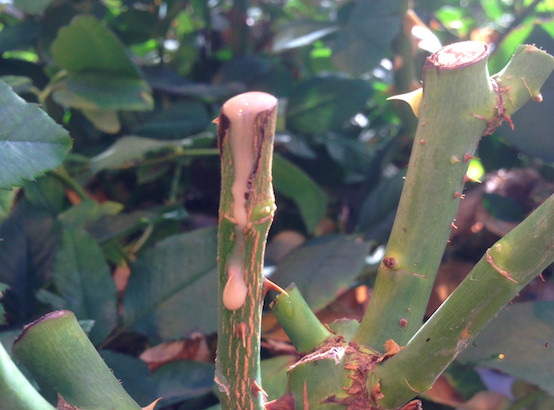A Dutch cut-rose nursery has been closed down since week 15, because of the bacterium Ralstonia solanacearum (brown rot). Complete clearing will probably take place, just like the previous time the Q-organism was found there in 2016. The Netherlands Food and Consumer Product Safety Authority (NVWA) had declared the company Ralstonia-free in 2017, after a period of monitoring.
By Hans Neefjes
After tracing investigations in 2016, the NVWA found that fifteen rose companies in the Netherlands were infected with the Q-organism Ralstonia solanacearum (Rsol). According to the 2000/29/EG phyto sanitary directive, plants infected with this quarantine organism must be destroyed.
An elimination scenario was applied to the infected companies, and the NVWA monitored the nurseries throughout 2017. All fifteen companies were declared bacterium-free after the monitoring period, apart from one. The nursery that was closed down (again) by the NVWA since the beginning of week 15 in 2018, was one of the companies that had just reopened.
The NVWA isn’t publishing any further statements until they receive the definitive results from sample testing. “The investigation is currently ongoing”, said a spokesman.
High alert
The outbreaks of Rsol in 2015 and 2016 meant that growers and propagators of cut rose have been on high alert. The number of samplings and testing during the cultivation and production of propagation materials for example, has dramatically increased. The number of preventive hygiene measures during the propagation and transportation of propagation materials has also gone up, because all infections had been found in young plants so far. The source of the infection hasn’t been discovered yet.

The nursery that was closed down this time, had been back into production since the beginning of 2017, after they had destroyed the old, contaminated crops and thoroughly cleaned the entire company and all equipment.
The new crops did well for almost a year. But after the frosts in the beginning of 2018, when there was a sudden change in the weather, they noticed a strong decline in the growth. In some places in their greenhouse, branches no longer grew to the same length, new shoots hardly grew at all and buds got smaller and smaller.
The grower felt wary and initiated lab research. That’s when Rsol was discovered. The nursery immediately reported it to the NVWA, as per the legal requirements. The company was subsequently closed down.
NVWA’s report
In a 2017 report, the NVWA stated that the Ralstonia solanacearum (variety 1) infection in rose had almost come to an end, with only 1 contaminated company left in 2017, after the monitoring period. That particular company remains under supervision until September 2018, according to the NVWA’s annual report. In order to keep track, the NVWA included R. solanacearum in their 2018 phytosanitary monitoring program for the cultivation, propagation and breeding of cut rose.
The European Commission had an audit carried out in September 2017, to assess the Dutch approach to eliminating R. solanacearum. In its report, the Commission was very positive about the Dutch approach, apart from one aspect. They felt that the risk of contamination wasn’t sufficiently addressed by certain parties involved in cut-flower sales.









